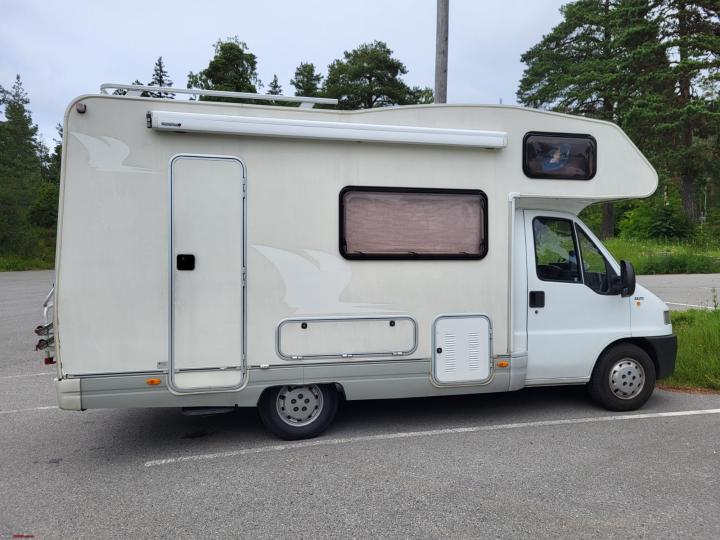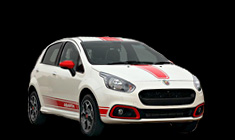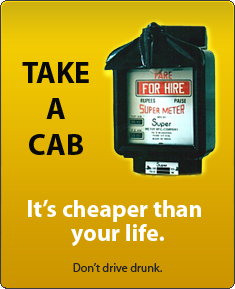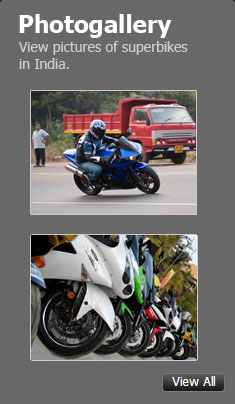News
Travelogue: A 6-day road trip to Norway in an RV
It was a 2001 model Fiat Ducato that had more than 100,000 km on the clock, but despite my initial misgivings about its age, it turned out to be a very pleasant camper, and the engine, a 2.8 L JTD (turbo diesel) seemed quite adequate, once it had spooled up a bit.
BHPian supermax recently shared this with other enthusiasts.
Firstly, a big hat-tip to BHPian 14000rpm who helped turn the plans for a regular road trip to Norway into an RV road trip to Norway, thanks to his posts on the subject. Thank you for your invaluable input, Avinash!
The planning behind the trip
The allure of a trip to Norway has always been there for me, but I’d never really gone past the initial superficial interest/curiosity. Each time I saw videos or pictures of the Norwegian fjords, the feeling would rise up, only to get buried under the myriad of other things that Life tends to throw at us, and so it was until earlier this year. The feeling came back in full force this year, and this time around, it wasn’t going away! I knew that the only way to ensure a good Norway trip would be if it was planned from the get-go as a road trip, and the excitement kept rising, as it would be the first real road trip for the family! The prospect of a multi-day road trip across the incredibly scenic roads of Norway was extremely heady, but there was also the huge task of planning the actual logistics for the trip. Pulling it off flawlessly would mean that my wife would be convinced that I could be trusted to plan and execute a trip for the whole family, including its youngest member, our two-and-a-half-year-old son, and its oldest member, my 73-year-old mother, who’d be visiting us during the summer.
Plan outlines were made and discarded by the dozens; points of interest to be covered, the order in which they’d have to be approached, and most importantly, the places where we’d have to plan for the overnight stops. As soon as I started looking at the list, I realized that it was not only going to be very expensive for all of the hotel/Airbnb stays, but we’d also run the risk of plans failing. Would everything go exactly as I’d planned? What if I ended up several hours of driving away from the place I’d booked to stay? Even as I was tossing all these questions in my head, I decided to search for posts related to trips in Norway, and I came across the posts by 14000rpm; to say that my mind was blown, would be an understatement! He’d done trips to Norway, not one but two, and he’d done both with a camper/RV! Suddenly, I saw my problems melting away, and I found answers to all of my questions! An RV, of course! While I’d been itching to do a long trip in my own car, the advantages of doing this Norway trip with an RV were simply too many to ignore. We’d get the flexibility of having a place to crash in, no matter where we decided to stop. The uncertain availability of food that we’d like and the variable availability of cooking facilities across our accommodations would also no longer be a problem. We’d have our own food supplies, a refrigerator we could stock up on, and a kitchen environment that would remain constant throughout the trip! As 14000rpm notes in his post, we are saved from packing and unpacking multiple times during the trip, and that is one of the biggest advantages, if not the biggest advantage, from an RV! Looking at his pictures and notes, it left me no doubt whatsoever that I could pull this off. His tip about the park4night app is another thing I’ll be forever grateful for, as it made planning stops so incredibly easy. It’s a fantastic and thriving app and I had the pleasure of adding a couple of services to its database during my trip
Convincing my spouse was not going to be trivial, but once I gave her the full information and backed it up with pictures from potential RVs which I’d scouted out on a site called mycamper.com (an Airbnb-like site for renting and hiring out campers), she was game. We decided that either the last week of June or the first week of July would be the best weeks for the trip. We’d decided that it would have to be a week-long trip, and not longer, as we’d simply not done such a long trip with the kid earlier, and if it became too long for him, none of us would have a good time. I now had her on my side, and we both started looking for prospective campers. Those that were close to being were either too expensive, too small, or simply unavailable during the period we were interested in renting. After a bit of asking around, I got in touch with a caravan owner who lived some 150 km away. The distance was a bit of a dampener, but I decided that it would work just fine, as long as the vehicle was good. I made a trip there to see for myself and even got to take it for a little spin. It was a 2001 model Fiat Ducato that had more than 100,000 km on the clock, but despite my initial misgivings about its age, it turned out to be a very pleasant camper, and the engine, a 2.8 L JTD (turbo diesel) seemed quite adequate, once it had spooled up a bit. And oh, it was a stick shift, with a 5-speed gearbox, with the stick on the dash, kind of where my car has the infotainment screen! Both the seating and sleeping arrangements that the RV afforded were exactly as we’d wanted it to be, and I knew then that it was a go! We shook hands on it and I paid him the advance a
Planning the route
Now that the vehicle was sorted out, I started planning for the trip in earnest. When a country is both as big as Norway is and as beautiful as it is, and one has a very limited time interval in which the whole trip is to be planned, the task of cramming as many things as possible without making it too busy an itinerary can be quite a challenge. The instructions from my wife had included some conditions that I’d have to do my best to meet, and they were thus:
- No leg of the journey should exceed 3.5 hours of continuous driving.
- The driving day should end no later than 8 PM, each day of the tour.
- Stops should be planned so that they could coincide with our son's meal times.
- I should ensure that our son got enough breaks where he could stretch his legs, and walk/run about for a bit.
With these restrictions in place, I set about in earnest and came up with a plan, which looked like this.
Day 1: Leave Linköping early in the day, and make it to Karlstad for lunch. The day would then see us crossing the border into Norway, and driving to a place which had been noted to be a good place for overnight halts with RVs and campers. The place would have no services though, so we’d have to manage with whatever we had.
Day 2: Drive up the Drammen Spiral tunnel, cross Odda, before ending the day at the full service campsite called Eikhamrane, along the magnificent Handangerfjord. My wife hoped to be able to fire up the electric cooker when connected to the mains power, and prepare food that would feed us the next day which would be a hectic one.
Day 3: Drive along the scenic route to Flåm, where we had booked a fjord cruise along the Naeroyfjord, between Flåm and Gudvangen, followed by a visit to the incredibly beautiful vantage point called Stegastein viewpoint, before ending the day in the small town of Laerdalsoyri.
Day 4: Make two ferry crossings along our way to the village called Balestrand where we’d booked a fjord and glacier tour. After the tour, we’d return to Laerdalsoyri where we’d booked a night stay at the lovely full-service camping grounds.
Day 5: Start of our return journey, with the plan to cross into Sweden and stop at the free RV parking lot at the Töcksfors Shopping Center which is right at the border of Norway and Sweden.
Day 6: Reach home (Linköping), with a point-of-interest stop at the beautiful castle at Örebro, some 140 km from home; return the RV to its owner, after unpacking and final cleaning.
Here's my route, on Worldee:
https://www.worldee.com/eu/trip/detail?tripId=690841
Additional notes on planning
Plans are like parachutes; better to have them and not need them, than to need them and not have them! That said, one should make more than just one plan, and still factor for some flexibility, as the old adage goes, man proposes, and God disposes! I'd made meticulous plans, keeping in mind the mandatory meal stops and stretching stops, but also fuel stops. While it's totally okay to just go with the flow and fuel wherever we find a gas station, I wanted to actually plan for them, so that I could always ensure that the RV had as close as possible to at least half a tank of gas. I was told that I could expect around 11L/100 km fuel efficiency and that the tank capacity was around 60L, giving me a max range of around 600 km, give or take a bit, so I planned on never driving more than 450 km without taking on fuel. Another tip I got from a colleague of mine was about fueling in Norway; the gas/diesel prices could vary significantly across gas stations in Norway, and prices could vary anywhere between half a crown to four crowns, all within the span of a few miles, so I made a mental note to observe price trends as I drove past gas stations, to let me know what the average rates were, and hence the outlier rates. If the price was significantly lower than the average, I could then fuel up, even if it wasn't exactly time to fuel or avoid fueling at a planned location, if the price seemed to be significantly higher than the norm. This would help me cut my fuel costs a bit.
Continue reading BHPian supermax for more insights and information.
- Tags:
- Indian
- Member Content
- Travelogue





.jpg)











